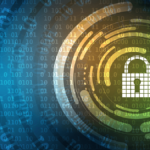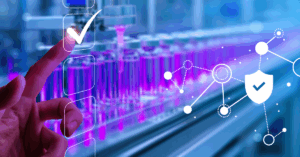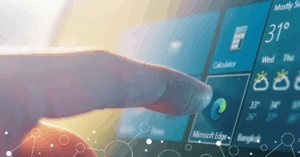10 Internet of Things IoT Healthcare Examples
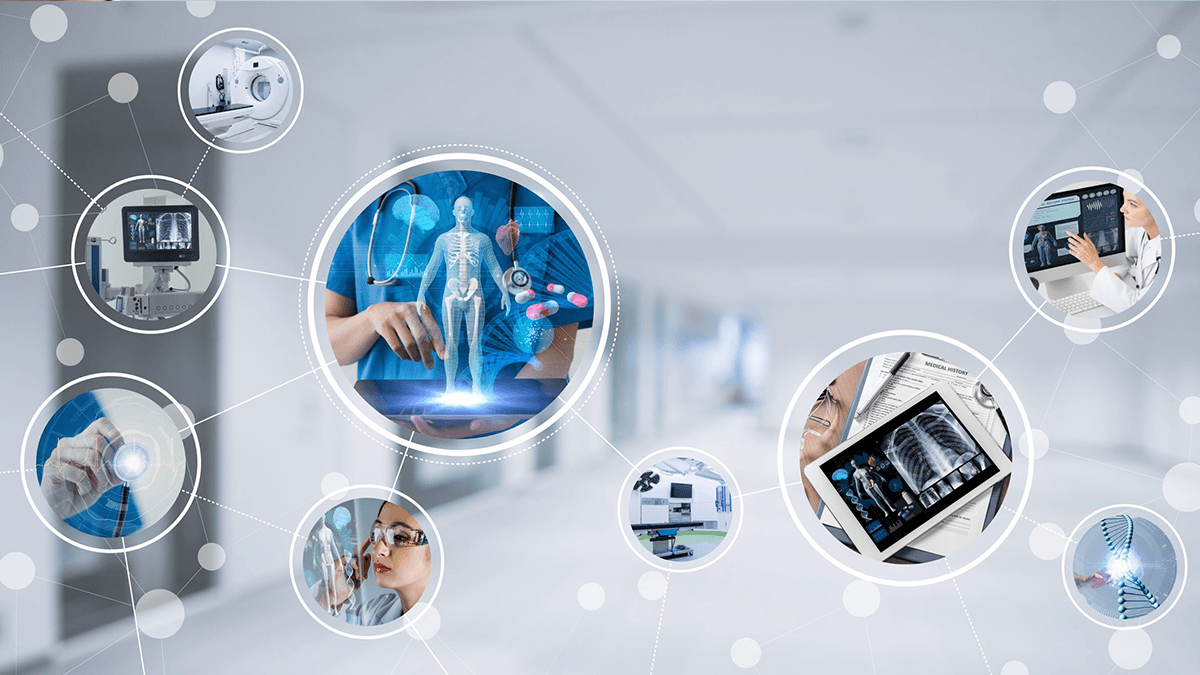
The Internet of Things (IoT) has allowed for significant innovation and improved patient care in the healthcare industry. The IoT healthcare services market is anticipated to reach $534.3 billion by 2025.
IoT devices in healthcare are empowering new medical devices, therapies, treatments, analysis, and care. Commonly known as IoMT, these connected medical devices are transforming patient outcomes and enabling more efficient work across healthcare teams. These devices, while transformative, require specific methods for securing against cyberattacks. Still, the benefits these devices provide patients and clinicians with typically outweigh the cons. With the right understanding of these devices, the networks they connect to, and proper IoT security practices in place, they can work harmoniously to achieve a better experience for patients and clinicians alike.
What is IoT and IoMT?
Internet of Things, also known as IoT, are physical objects embedded with sensors, software, and network connectivity that enable them to collect and exchange data over the Internet. These smart devices range from everyday consumer products like thermostats, wearables, and appliances to sophisticated industrial equipment and sensors. They can operate autonomously, communicating with other devices and systems without requiring human intervention.
IoMT devices are used in multiple healthcare sectors to address myriad challenges that were previously challenging to solve. For example, IoT-connected MRI machines can send diagnostic imaging to clinicians in real time, creating faster diagnoses and better patient communication. Transmitting this data digitally has even more benefits. By reducing the need for frequent in-person visits and enabling remote care, IoMT not only improves accessibility to healthcare services but also significantly lowers costs for both patients and providers. The integration of IoMT in healthcare is paving the way for a more proactive, efficient, and patient-centric approach to medicine, ultimately resulting in improved health outcomes and a higher quality of life for individuals. These ten examples of IoT in Healthcare illustrate how IoT technology is facilitating medical treatment, aiding healthcare professionals, and preventing illness and what the utilization of IoT devices for medical purposes means for IoT security in healthcare organizations.
10 IoT of Healthcare Examples and Applications
1. IoT Healthcare Example: Glucose Monitoring
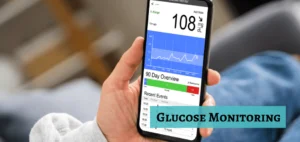
Glucose monitoring has traditionally been complex for more than 37 million Americans with diabetes. If the levels fluctuate periodically, then intermittent or manual testing may not be adequate to distinguish the issue.
IoT glucose monitoring devices with embedded or wearable body sensors help minimize the risk of death by diabetes by providing continuous, automated monitoring of patient glucose levels. It makes it possible to detect sugar levels at an earlier stage so that necessary steps can be taken to recover them faster. The need to keep manual records is also eliminated with the introduction of IoT glucose monitoring devices.
2. IoT Healthcare Example: IoT Heart Rate Monitoring (ECG)
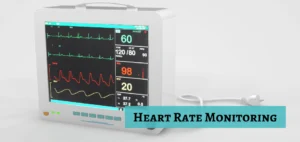
Like glucose monitoring, heart rate monitoring is also a challenging process in healthcare facilities, and the number of heart patients is rapidly increasing across the globe. Various IoMT devices are available to monitor heart rating and detect heart rate & pulse in heart patients, such as electrocardiographs.
Few sensors connected to heart rate monitoring devices send and store real-time pulse rates on the cloud, and it would be accessible from anywhere over the globe. These devices are helpful in emergencies and provide data security to prevent IoT Security Risks.
3. IoT Healthcare Example: Remote Patient Monitoring
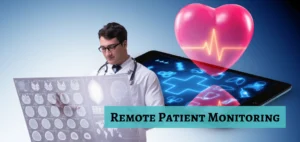
Why are most patients readmitted to the hospital after treatment and surgery? The answer is clear; lack of monitoring patients. Remote monitoring IoT medical devices play an effective role because they automatically collect health metrics such as temperature, heart rate, blood pressure, and more from patients who are no longer physically present in a healthcare facility.
After collecting this data, it sends it to the software application or cloud from where a patient/doctor can view it. If an IoMT device senses unusual data, it generates an alert to notify both the patient and the doctor. Remote monitoring devices are easy to operate; however, the security and privacy of highly personal data these devices collect are a cybersecurity challenge healthcare organizations will need to address.
4. IoT Healthcare Example: MRI Machines
IoT-connected MRI machines are revolutionizing medical imaging by seamlessly integrating advanced technology with traditional diagnostic tools. These smart devices leverage internet connectivity, cloud computing, and artificial intelligence to enhance the efficiency and accuracy of MRI scans. By incorporating IoT sensors, these machines can transmit real-time data on their performance, enabling remote monitoring and predictive maintenance. This connectivity allows healthcare providers to optimize machine utilization, reduce downtime, and streamline patient scheduling. IoT-enabled MRIs can also securely transfer and store images in cloud-based systems, facilitating easier access and collaboration among medical professionals. The integration of machine learning algorithms further enhances image analysis, potentially leading to faster and more accurate diagnoses. Additionally, these smart MRI machines can be remotely accessed for diagnostics and troubleshooting, reducing the need for on-site technician visits. This not only cuts operational costs but also ensures minimal disruption to patient care. As IoT technology continues to advance, MRI machines are becoming more intelligent, efficient, and patient-centric, promising a future where high-quality diagnostic imaging is more accessible and cost-effective for healthcare providers and patients alike.
5. IoT Healthcare Example: IoT Infusion Pumps
IoT-enabled infusion pumps are revolutionizing healthcare by combining precision drug delivery with remote monitoring and control capabilities. These smart devices use advanced sensors and microcontrollers to accurately administer medications or nutrients directly into a patient’s body. The pumps can be programmed to deliver specific dosages at predetermined intervals, ensuring patients receive the right amount of medication at the right time. What sets IoT infusion pumps apart is their ability to connect to hospital networks and the internet, allowing healthcare providers to monitor and adjust infusion rates remotely. This connectivity enables real-time data transmission, including infusion status, remaining fluid volume, and any potential issues like occlusions or air bubbles. Healthcare professionals can access this information through dedicated web portals or mobile applications, making it possible to manage multiple patients’ treatments simultaneously from different locations. Additionally, these smart pumps often incorporate safety features such as drug libraries and dosage error reduction systems to prevent medication errors. By leveraging IoT technology, infusion pumps not only improve the accuracy and efficiency of drug administration but also enhance patient safety and reduce the workload on medical staff.
6. IoT Healthcare Example: Hand Hygiene Monitoring
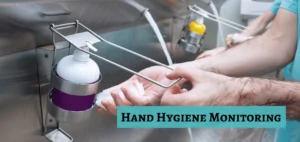
Hand hygiene is crucial for healthcare staff to minimize the risk of spreading disease, virus, and contagion. Traditionally, there was no definite way to ensure patients and the healthcare sector washed their hands properly.
Today, different types of hand hygiene monitoring IoT devices remind visitors to wash their hands when entering a room and can even instruct the user on how best to sanitize their hands to mitigate risk for a specific patient. These devices also have monitoring sensors that monitor your hands and remind you when you need to sanitize your hands.
7. IoT Healthcare Example: Connected Inhalers
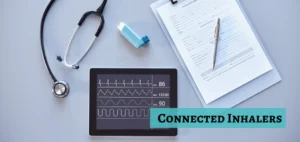
The inhaler is the most crucial device for controlling asthma disease. Asthma is a tragic disease that is not curable and often involves sudden, unpredictable attacks. At that instant, an inhaler acts as a significant cure to overcome these sudden attacks.
Healthcare IoT provides a smart solution to deal with the problem effectively. IIoT-connected inhaler is a sensor-connected inhaler that alerts the patient by monitoring the frequency of attacks and triggering factors, such as environmental factors, to prevent future asthma attacks. These smart inhalers can also alert the patient when they misuse them or leave them at home.
8. IoT Healthcare Example: Hearing Aid
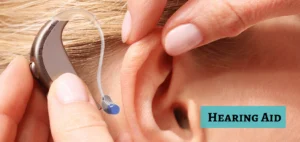
More than 400 million people suffer from progressive hearing loss, which poses a significant concern. IoMT-connected devices, such as IoT-based hearing aids, can make life easier and safer for those with hearing loss. This IoT hearing aid can listen to several conversations at once or focus on a single sound in a noisy environment.
9. IoT Healthcare Example: IoT Security Cameras
IoT security cameras are revolutionizing healthcare facilities by enhancing safety, improving patient care, and streamlining operations. These smart devices go beyond traditional surveillance, integrating advanced analytics and real-time monitoring capabilities. In hospitals and clinics, IoT cameras provide continuous visual oversight of critical areas, allowing staff to remotely monitor patients and detect potential security threats. The cameras’ intelligent features can automatically alert personnel to unusual activities or patient distress, enabling faster response times. Additionally, these systems contribute to operational efficiency by tracking equipment movement, managing visitor access, and ensuring compliance with safety protocols. IoT cameras also play a crucial role in preventing patient wandering and enhancing overall facility security.
However, the implementation of these devices comes with challenges, particularly in maintaining patient privacy and data security. Healthcare providers must carefully balance the benefits of comprehensive monitoring with strict adherence to regulations like HIPAA. As the technology evolves, IoT security cameras are increasingly being integrated with other smart hospital systems, creating a more connected and responsive healthcare environment. This integration allows for improved communication between departments, enhanced patient monitoring, and more efficient resource allocation, ultimately contributing to better patient outcomes and a safer healthcare ecosystem.
10. IoT Healthcare Example: Robotic Surgery
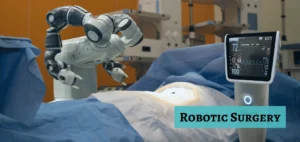
Surgery is a complex task that requires extensive experience, surgical tools, medical devices, and a qualified surgeon. During the surgical operation, a surgeon may need to perform a complex procedure that is difficult to manage only with hands. IoT robotic devices can more precisely and effectively perform parts of a surgical operation successfully. These devices are easy to insert and small enough to perform surgery with minimal disruption in the patient’s body.
Why IoT Healthcare Security Matters & How Asimily Helps Secure IoT Devices
In an interconnected healthcare network, IoT devices create an untenable reality for healthcare organizations. In healthcare, these IoT devices often process and generate sensitive PHI. Due to their lack of native security features, and the PHI they access, the healthcare industry is a prime target for cyberattackers. Given that many healthcare organizations have hundreds if not thousands of IoMT devices, managing the security of these devices across an entire health system is cumbersome at best when done manually.
Asimily is the only complete risk mitigation platform for IoT, OT, and IoMT. Asimily provides unmatched visibility into all connected devices on a network, not just IoMT – closing crucial security gaps from the world’s riskiest devices. Asimily identifies and classifies IoT cybersecurity threats and prioritizes vulnerabilities to drive efficient use of resources to actionably reduce risk in your unique environment. To learn more about Asimily’s robust threat detection, business continuity, and disaster recovery, download our Total Cost of Ownership Analysis on Connected Device Cybersecurity Risk whitepaper or contact us today.
Secure Every IoT Device.
Automatically.
Cyber threats move fast — so should you. Asimily gives instant inventory and smart, prioritized risk mitigation insights for every IoT, OT, and IoMT device — so you can take action before threats strike.
